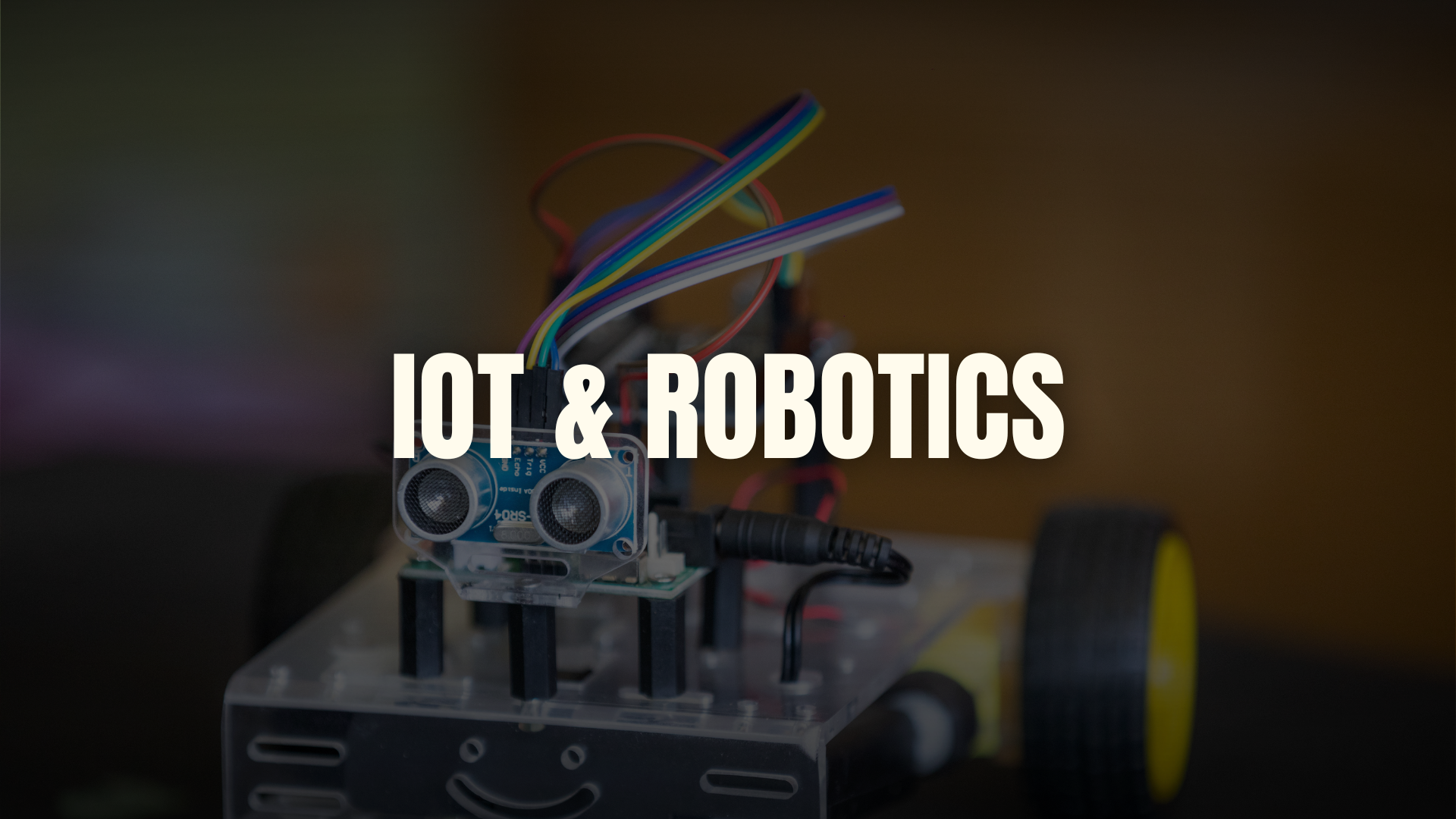Currently Empty: ₹0.00
Build the future of automation with this exciting IoT & Robotics course from Ucanly. This intermediate program is for creators and developers who want to merge the physical world of robotics with the vast network of the Internet of Things (IoT). You will learn to design, build, and program intelligent robotic projects that can be monitored and controlled from anywhere in the world using sensors, actuators, and cloud platforms.
With the expert guidance of Ucanly, you will learn to program microcontrollers like Arduino and ESP32 to control motors, read sensor data, and connect to the internet. This Ucanly course is intensely hands-on, guiding you through the process of sending real-world data to a cloud dashboard and receiving commands to trigger robotic actions. You’ll master the integration of hardware and software to create truly smart, connected devices.
By the end of this project-driven course, you will have built a sophisticated, cloud-connected robotic system, demonstrating your ability to engineer a complete IoT solution from the ground up.
What Will You Learn?
- Build and program robots using Arduino and ESP32 microcontrollers.
- Integrate a wide variety of sensors and actuators into your projects.
- Connect your hardware projects to the internet via Wi-Fi.
- Use IoT cloud platforms to visualize data and control your robot remotely.
- Understand and use the MQTT protocol for efficient IoT communication.
- Design and implement autonomous behaviors in your robots.
- Complete a portfolio-ready IoT robotics project from concept to deployment.
Material Includes
- Live Q&A and Project Build-Along Sessions with Instructors
- On-demand video lectures
- Downloadable source code, circuit diagrams, and 3D-printable part files
- Guides for selecting components and tools
- Quizzes and challenging hands-on lab assignments
- Lifetime access to course materials and future updates
- Certificate of Completion from Ucanly
Requirements
- A computer (Windows, Mac, or Linux).
- An electronics kit including an Arduino or ESP32, motors, sensors, and a robot chassis is required. A detailed parts list will be provided upon enrollment.
- A solid understanding of programming in C/C++ (Arduino language) is essential.
- Basic knowledge of electronics (voltage, current, breadboarding) is required.
- A passion for building, tinkering, and solving real-world problems!
Audience
- Hobbyists and Makers who want to take their projects to the next level with internet connectivity.
- Software developers who are curious about hardware and want to build physical devices.
- Engineering students (Mechanical, Electrical, Computer Science) looking for practical project experience.
- Anyone interested in a career in automation, robotics, or the Internet of Things.
Course Content
Module 1: The Intersection of Worlds (The Ucanly Connection)
This module, curated by Ucanly, establishes the fundamental principles of how IoT and Robotics work together.
-
Lesson 1.1: Course Introduction: What are IoT and Robotics?
-
Lesson 1.2: The Synergy: How IoT Supercharges Robotics
-
Lesson 1.3: Essential Electronics for Robotics (Motors, Power Supplies, Drivers)
-
Lesson 1.4: Choosing Your Brain: Arduino vs. ESP32 Microcontrollers
-
Lesson 1.5: Setting Up Your IDE and First Hardware “Hello World”
Module 2: Building the Robotic Body
Learn to assemble and control the physical components of a robot to make it move and interact with its environment.
-
Lesson 2.1: Understanding DC Motors, Servos, and Stepper Motors
-
Lesson 2.2: Using Motor Drivers to Control Speed and Direction
-
Lesson 2.3: Assembling a Basic Robotic Chassis
-
Lesson 2.4: Programming Basic Movement: Forward, Backward, and Turns
-
Lesson 2.5: Project: Creating an Obstacle-Avoiding Rover
Module 3: Giving the Robot Senses
Equip your robot with a variety of sensors to perceive the world around it.
-
Lesson 3.1: Working with Digital and Analog Sensors
-
Lesson 3.2: Measuring Distance with Ultrasonic and Infrared Sensors
-
Lesson 3.3: Sensing the Environment: Temperature, Humidity, and Light Sensors
-
Lesson 3.4: Reading Motion with Accelerometers and Gyroscopes
-
Lesson 3.5: Project: Building a Line-Following Robot
Module 4: Connecting Your Robot to the Internet
Learn how to use Wi-Fi-enabled microcontrollers to get your project online.
-
Lesson 4.1: Introduction to Wi-Fi Modules (ESP8266 & ESP32)
-
Lesson 4.2: Connecting to a Wi-Fi Network
-
Lesson 4.3: Making Your First API Request to a Web Service
-
Lesson 4.4: Creating a Simple Web Server on Your Microcontroller to Control an LED
-
Lesson 4.5: Live Session: Real-Time Network Debugging
Module 5: IoT Cloud Platforms (A Ucanly Deep Dive)
Master the art of sending sensor data to the cloud and receiving commands from a dashboard, with guidance from Ucanly.
-
Lesson 5.1: Introduction to IoT Platforms (Blynk, Adafruit IO, AWS IoT)
-
Lesson 5.2: Understanding the MQTT Protocol for IoT
-
Lesson 5.3: Sending Sensor Data to a Cloud Dashboard
-
Lesson 5.4: Creating a UI with Buttons and Sliders to Send Commands
-
Lesson 5.5: Project: Creating a Cloud-Based Environmental Monitor
Module 6: Building the Connected Robot
This is where it all comes together! Integrate your robotic system with your cloud platform.
-
Lesson 6.1: Architecting an IoT-Enabled Robot
-
Lesson 6.2: Controlling Robot Movement from a Web Dashboard
-
Lesson 6.3: Streaming Live Sensor Data from Your Robot to the Cloud
-
Lesson 6.4: Setting Up Alerts and Notifications Based on Sensor Triggers
Module 7: Automation and Autonomous Behavior
Program your robot to make intelligent decisions based on a combination of local sensor data and cloud commands.
-
Lesson 7.1: Creating State Machines for Robot Behavior
-
Lesson 7.2: Programming Autonomous Tasks (e.g., “Patrol until a command is received”)
-
Lesson 7.3: Over-the-Air (OTA) Firmware Updates
-
Lesson 7.4: Introduction to Edge Computing Concepts
Module 8: Capstone: The Smart IoT Robot (The Ucanly Challenge)
Apply all your skills to build a complete, feature-rich IoT robotics project from start to finish.
-
Lesson 8.1: Project Ideation: Smart Robotic Arm, Automated Greenhouse, or Surveillance Rover
-
Lesson 8.2: System Design and Component Selection
-
Lesson 8.3: Building the Hardware and Developing the Firmware
-
Lesson 8.4: Final Demonstration of Your Cloud-Controlled Robotic System
A course by
U
Student Ratings & Reviews

No Review Yet




